I was born in San Antonio, Texas. My parents met hitch hiking and were married shortly after I was born. They split up sometime before I turned two years old. They were basically kids themselves. My mother was 19. An artistic streak runs in my family. My grandmother’s sister and my mother were exceptional artists. Art has always been in my life. I cannot remember a time when it wasn’t. My mom would take me to work with her where she waited tables and set me up in an unoccupied banquet room with pens, crayons and markers and encouraged me to draw. She would come in and check up on me every 5-10 minutes in between taking orders for hungry customers. I was very happy and self contented to do this. I cannot remember a time when I wasn’t drawing. Growing up, I was always the kid in class drawing pictures for everyone. It has always been with me.
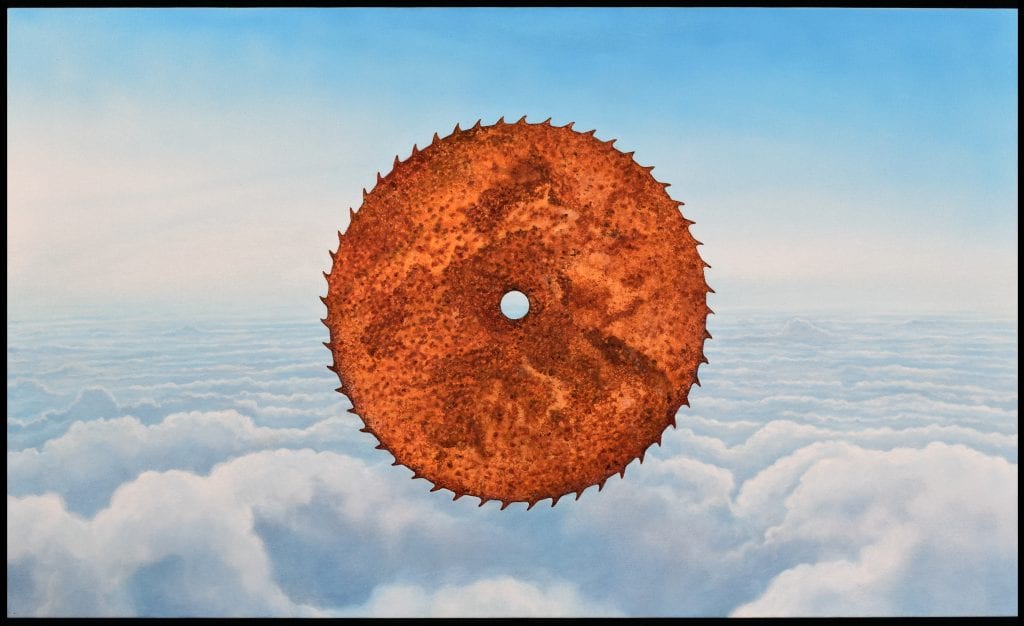
“Sky Saw” 30 x 50 in. Acrylic on canvas 2019. Photo by Paul Ruscha and courtesy of the artist.
A perfect studio day for me consists of losing myself in a painting. Painting for me is a meditation. I lose all thought. Breaking for food seems to be an inconvenience. And when I do stop, I cannot stop looking at the painting. If I have a visitor, you will catch me looking past them or over their shoulder to catch a glimpse of my unfinished work. Silently making calculations and plotting my next moves. An unfinished painting will “stare” at me and I am compelled to answer. Every so often I will wrestle with a painting like an alligator…..eventually taming it and bending it to my will. But a perfect studio day is more on the meditation side of things.
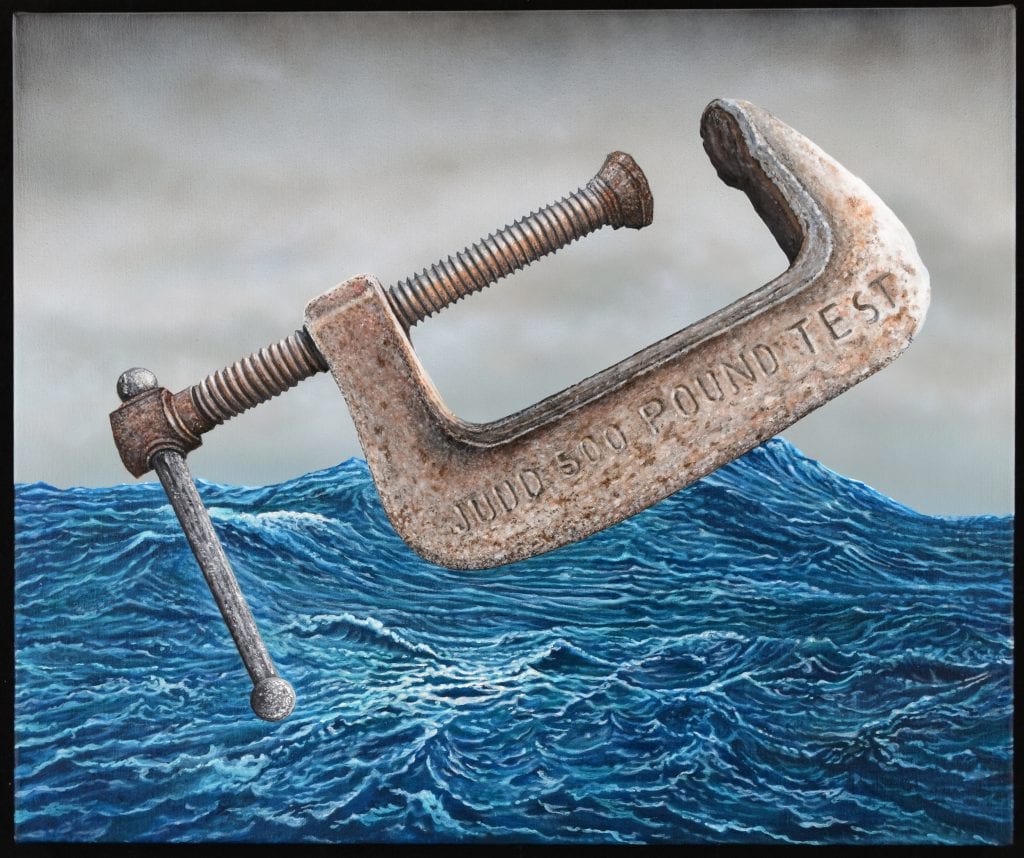
“The Sea Clamp” 25 x 30 in. Acrylic on canvas 2020. Photo by Paul Ruscha and courtesy of the artist.
The word “back” ground is misleading to me because sometimes it is the star of the show. Quietly lending its support to subject matter in the foreground. In my recent series of tools the background played a major role in that they were chosen for their ironic relationship to the subject. For example you cannot hammer or clamp the sea or sweep up the sand dunes.
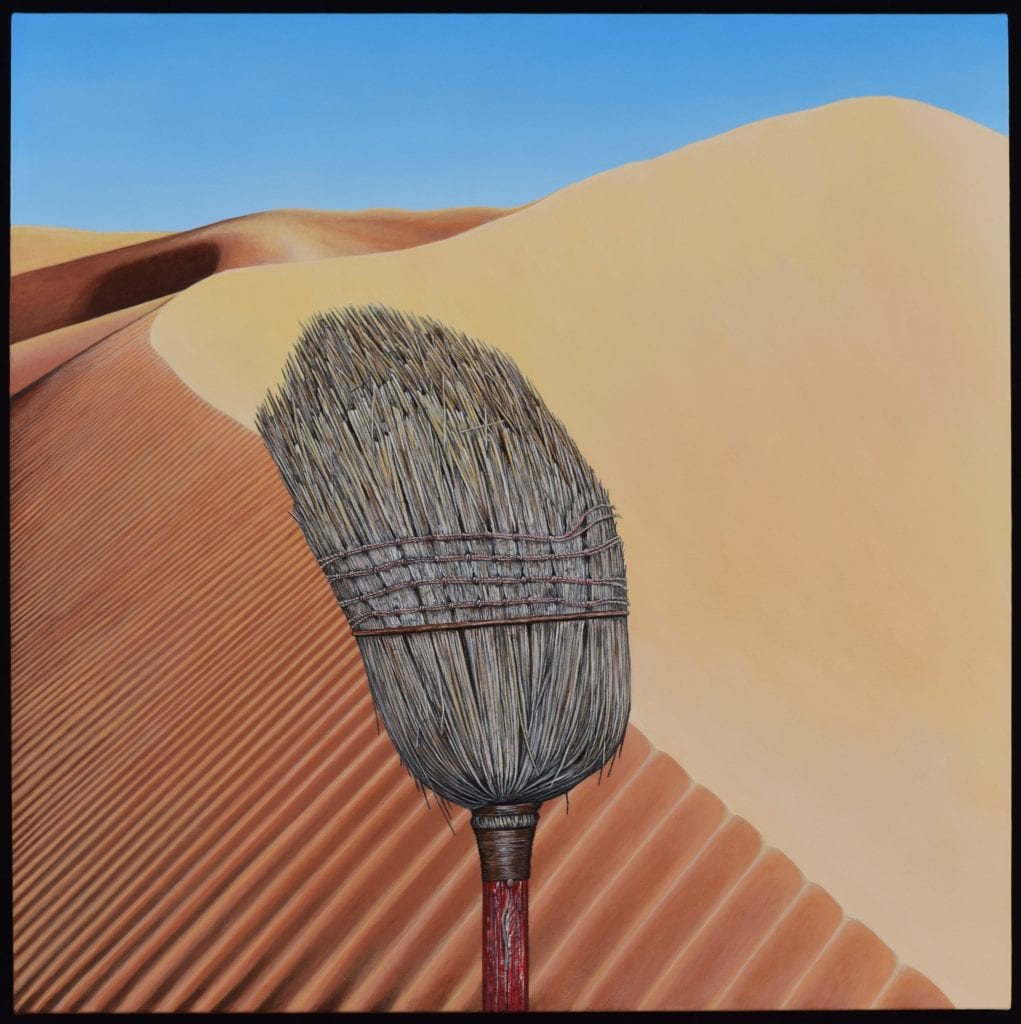
“The Broom of Futility” 30 x 30 in. Acrylic on canvas 2019. Photo by Paul Ruscha and courtesy of the artist.
Has your work always taken on the style it currently embodies?
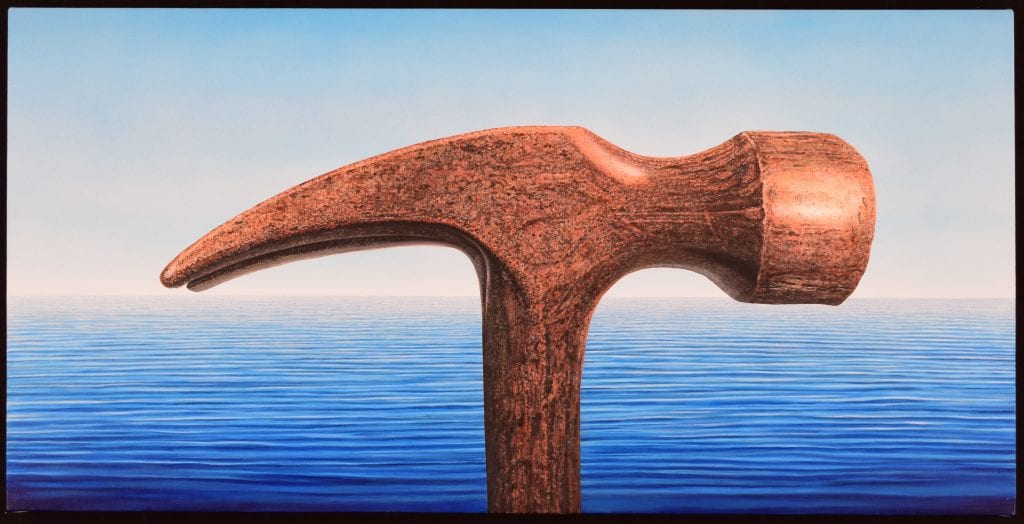
“The Hammer of Tranquility” 30 x 50 in. Acrylic on canvas 2019. Photo by Paul Ruscha and courtesy of the artist.
From where do you draw inspiration?
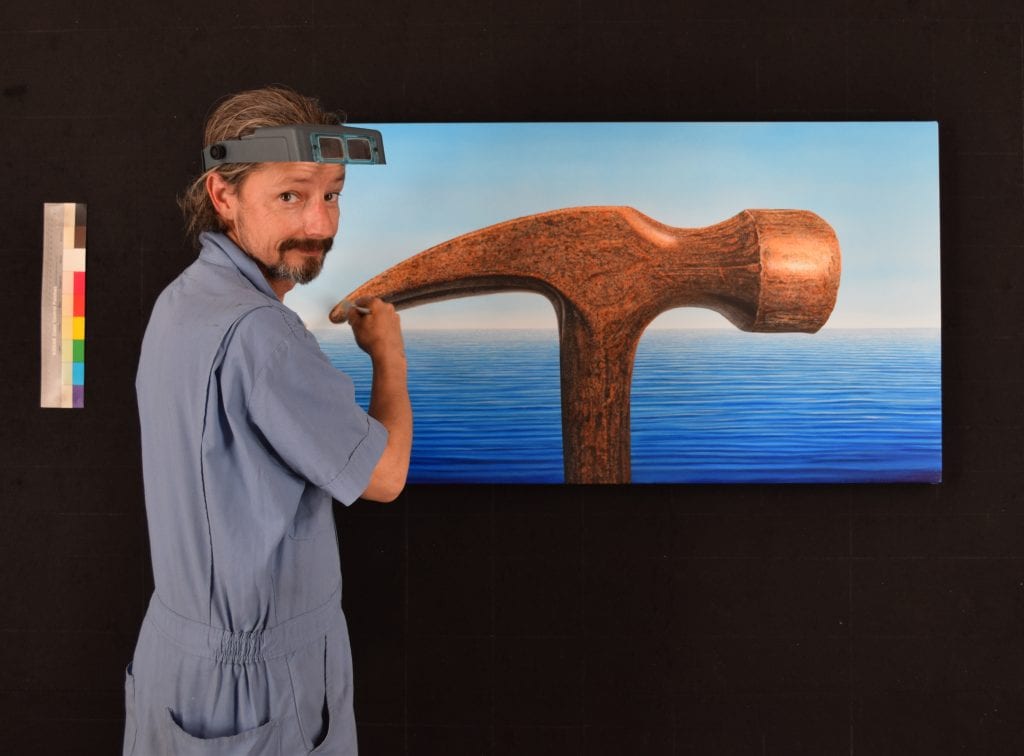
Photo by Paul Ruscha and courtesy of the artist.
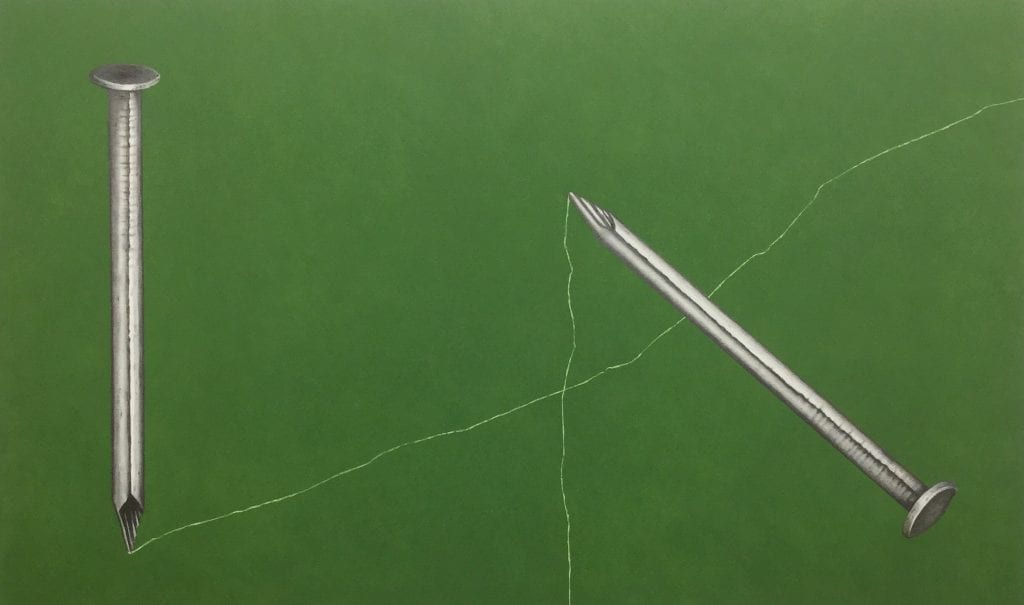
“Like Nails on a Chalkboard” 30 x 50 in. Acrylic on canvas 2020. Photo by Paul Ruscha and courtesy of the artist.
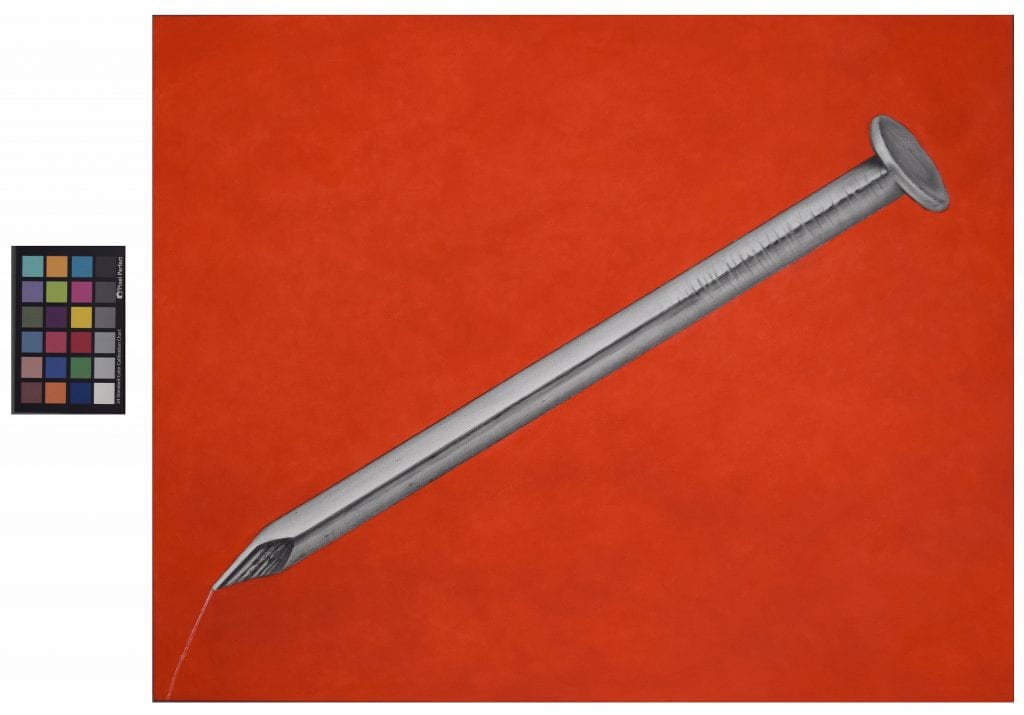
“Just Scratching the Surface” 25 x 30 in. Acrylic on canvas 2019. Photo by Paul Ruscha and courtesy of the artist.
What’s next for me? Hmmmm …. more painting. I really do love to paint, but perhaps some sculptures could be on the horizon. I’m not one of those people who can plot out their moves too far into the future. I’m terrible at chess and just recently learned how to pay their bills before the late notices come.